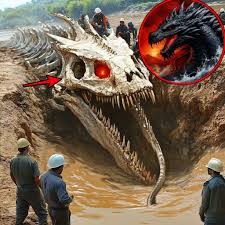A captivating rumor about a giant dragon skeleton found on a Chinese riverbank has sparked a modern mystery
The captivating rumor of a giant dragon skeleton found on a Chinese riverbank is a fascinating piece of modern folklore, but it is not a genuine archaeological or scientific discovery. This story, which has circulated widely on social media, has no basis in fact. The images and reports associated with the claim have been consistently debunked by experts and news outlets as hoaxes or misidentifications.

The strong cultural resonance of this rumor is a key part of its appeal. Dragons hold a powerful and symbolic place in Chinese mythology, where they are revered as divine, benevolent creatures associated with water, good fortune, and imperial power. The idea of finding a physical dragon skeleton taps directly into this deep cultural significance, blurring the line between myth and reality. However, these creatures exist in art, literature, and folklore, not in the paleontological record.

In many cases, the “dragon skeletons” in these viral images have turned out to be cleverly constructed art installations or hoaxes made from various animal parts. In some instances, they are simply misinterpreted finds. China is a globally significant location for dinosaur fossil discoveries, and the large, articulated skeletons of dinosaurs found in its riverbeds and desert regions can be mistaken by the untrained eye for the remains of a mythical dragon. The real mystery is not a dragon skeleton, but rather the human fascination that allows such a story to take flight, even in the face of overwhelming evidence to the contrary.
